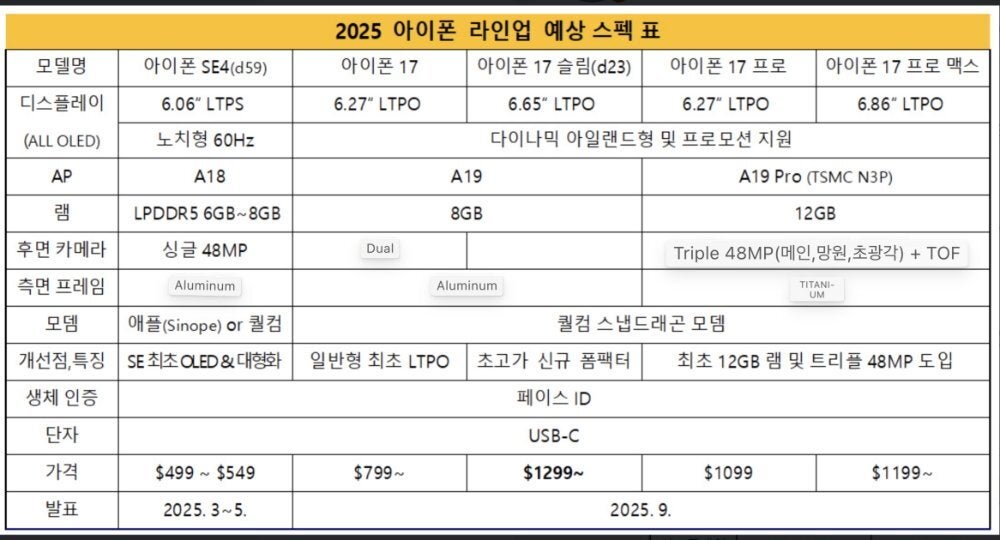These panels will also feature Low-temperature polycrystalline oxide (LTPO) technology which allows the refresh rate to vary depending on the type of content on the display. Video games would typically use a high refresh rate while static text such as email would get by with a low refresh rate. By using a dynamic refresh rate, a phone’s battery won’t take such a huge hit from powering the feature.

Just about everything you’d want to know about the iPhone 17 series can be found in this chart. | Image credit-Ice Universe
With a high refresh rate, users will notice smoother scrolling and by reducing flicker on the display, a high refresh rate might also lower the possibility of eye strain and fatigue.
Ice Universe’s post included a chart showing that the iPhone 17 and iPhone 17 Pro will both carry a 6.27-inch display. The iPhone “Slim” model will feature a 6.65-inch screen and the iPhone 17 Pro Max will be equipped with a 6.86-inch display. The non-Pro models including the “Slim” will be powered by the A19 application processor (AP). The A19 Pro will found inside the iPhone 17 Pro and iPhone 17 Pro Max. They will be made by TSMC using the foundry’s third-generation 3nm process node (N3P).
The iPhone 17 and iPhone Slim will have a dual-camera setup in the rear while the iPhone 17 Pro and iPhone 17 Pro Max will feature three 48MP sensors behind a Wide, Ultra-wide, and Telephoto lenses. All four models will have the Dynamic Island and Face ID.
The leak reveals that Apple intends to release the iPhone 17 series in September next year keeping with its long running tradition.

